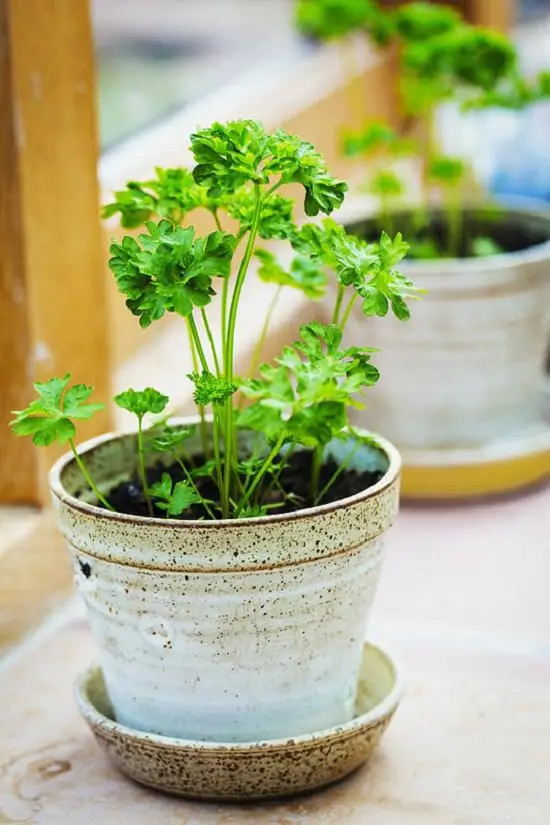Do you know there are Herbs that Grow without Sunlight? These do well outdoors and indoors, even in the shadiest of spots!
If you’ve got a shady garden or you live in an urban apartment where you don’t have access to direct sunlight, this list of Herbs that Grow without Sunlight is going to help you. These low-light herbs can survive in a lack of sunlight!
List of Herbs that Grow Without Sunlight
Without sunlight doesn’t mean that you can grow these herbs in complete darkness. It means that these herbs can survive in all-day-long indirect sunlight, much better if coupled with exposure to the mild morning sun.
1. Lovage

Botanical Name: Levisticum officinale
USDA Zones: 3a-7b
Size: 4-6 feet
Lovage is a tall perennial herb native to Europe. Its leaves, roots, seeds, and stems are edible. The plant has a tart, lemony flavor that goes well with soups, stews, tea, salads, and potato recipes.
Growing Tips
You can grow this herb in the shade in a warm climate. Use well-drained, sandy, loamy soil with neutral pH for best growth.
Note: Lovage is an excellent companion plant for potatoes and other tubers and root vegetables.
2. Chives

Botanical Name: Allium schoenoprasum
USDA Zones: 3-11
Size: A foot tall
One of the easiest herbs to grow, Chives are popularly used in salads and stews. You can grow it in the shade in bright, indirect sunlight.
Growing Tips
It’s really easy to grow; here’s a complete guide that will help you grow it indoors.
3. Sweet Cicely
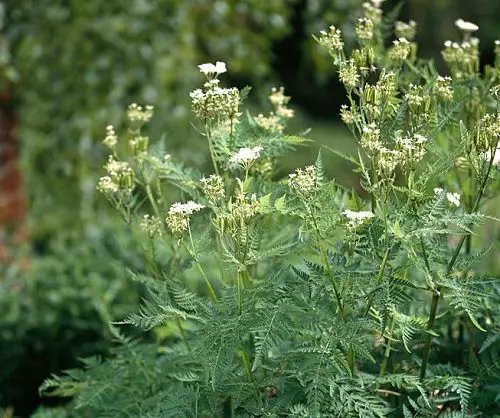
Botanical Name: Myrrhis odorata
USDA Zones: 4-9
Size: 2-4 feet
Also known as myrrh, Sweet Chervil, sweet cicely, and garden myrrh, this herbaceous perennial belongs to the celery family. The leaves and seeds are used in baked dishes and desserts. It has a sweet anise-like flavor with hints of celery.
Growing Tips
Grow ‘Sweet Cicely’ in well-drained soil. If growing indoors, placing it near a south-facing window will be an apt choice.
4. Corsican Mint
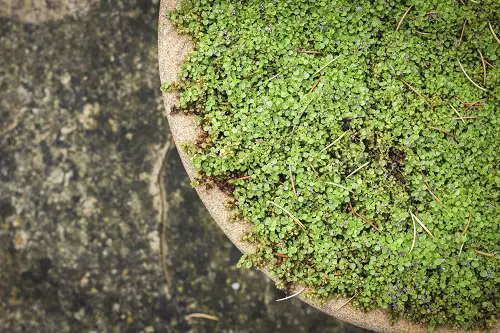
Botanical Name: Mentha requienii
USDA Zones: 6-9
Size: A foot tall
Native to Corsica, mainland Italy, and Sardinia, this low-growing mint variety produces bright green leaves with a mint-like aroma. The plant has a strong peppermint-like fragrance and is used in salads, teas, and cooked foods or as a garnishing agent.
Growing Tips
The ideal placement for this aromatic herb is near any window of your house. You can grow it in moist, well-draining soil.
5. Parsley
Botanical Name: Petroselinum crispum
USDA Zones: 4-11
Size: A foot tall
One of the most famous herbs, parsley, can tolerate shade if the temperature is warm. It elevates the taste of soups, sauces, and vegetables with its fresh and earthly flavor.
Growing Tips
To know in detail how to grow parsley, check out our article. It’s a quick read.
6. Wasabi
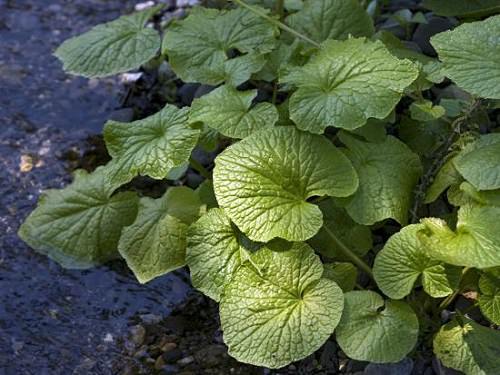
Botanical Name: Wasabia japonica
USDA Zones: 7-10
Size: 2-3 feet
Wasabi belongs to the mustard family of herbs and is native to Japan. This herb is famous for its use in a paste (from ground rhizomes) served with sushi. The mature green leaves are used in ‘Ohitashi‘ while young leaves are ideal for sandwiches and salads.
Growing Tips
Grow wasabi in an area where the plant is protected from direct sun. For more information, you can read our post.
7. Tarragon
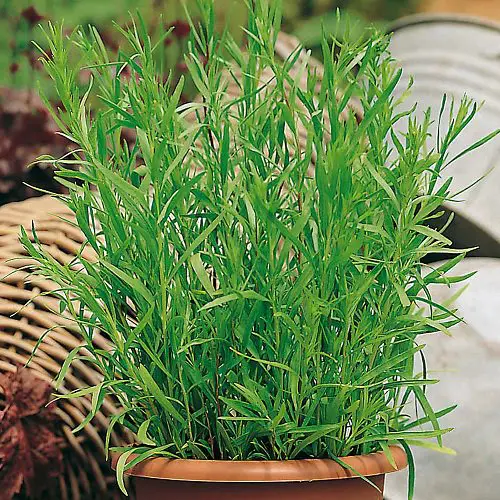
Botanical Name: Artemisia dracunculus
USDA Zones: 4b-8
Size: 2-3 feet
If you love French food, you should know that Tarragon is one of the four ingredients in the classic French seasoning mix Fines Herbes, which also includes parsley, chives, and chervil.
Growing Tips
Tarragon can be grown in part shade if the spot you’re placing it receives some morning sun.
8. Angelica
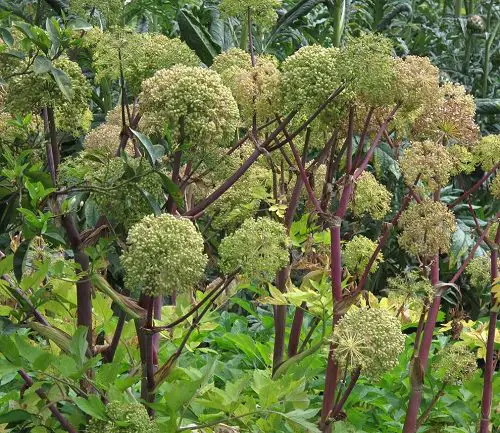
Botanical Name: Angelica archangelica
USDA Zones: 4-6
Size: 3-6 feet
An excellent medicinal herb, you can also use it in the kitchen. Both its leaves and stems are used for cooking. It offers an earthy bitter-sweet taste, which is somewhat similar to celery.
Growing Tips
This biennial herb does well in moist, fertile soil. Keep it in a canopy of trees in the garden to provide dappled shade.
9. Lemon Balm
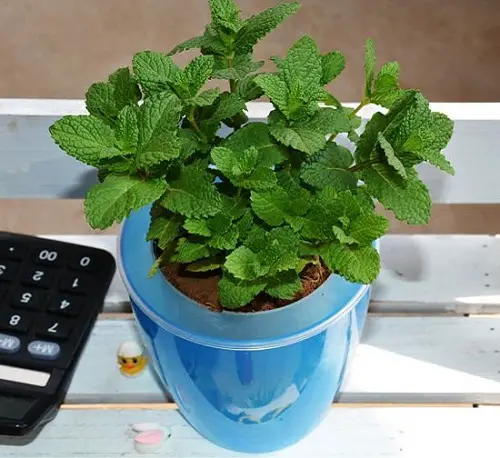
Botanical Name: Melissa officinalis
USDA Zones: 4-9
Size: 2-3 feet
Lemon Balm is an easy-to-grow herb that thrives in partial shade and has a delightful lemon scent. You can use its leaves in teas, salads, and desserts.
Growing Tips
Lemon balm naturally wants to grow upwards, so pinch and prune it frequently to encourage bushier growth and more leaves! And for upright growth.


